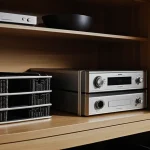Essential Tips for Pet-Proofing Your UK Home
Pet-proofing UK homes requires careful attention to the typical hazards found in many British residences. Understanding UK pet hazards includes recognizing that older houses often feature narrow stairways, exposed wires, and steep garden steps—all potential risks to curious pets.
Identifying and removing common household dangers is essential. This means securing cleaning products, medications, and choking hazards out of pets’ reach. Additionally, foods toxic to animals, such as chocolate and grapes, should be stored safely.
In parallel : How are UK cities tackling climate change?
For effective pet-friendly safety, securing windows, doors, and gardens is crucial. Many UK homes have sash windows or outward-opening doors which can allow pets to escape. Installing secure locks or pet-proof screens helps prevent accidents or unplanned adventures.
Gardens, a popular outdoor space, must be enclosed with secure fencing that pets cannot jump over or dig under. This is particularly vital for more agile dogs or escape-prone cats. Regularly inspecting fences for gaps or damage supports ongoing safety.
This might interest you : What are the Best Ways to Invest in UK Real Estate Through Financial Instruments?
By adapting to common UK home layouts and addressing these hazards thoughtfully, pet owners can foster safe, comfortable environments that reduce accidents and promote wellbeing for their furry family members.
Choosing Pet-Friendly Materials and Furnishings
Ensuring durable and safe materials throughout your home
When selecting pet-friendly home materials, focus on durability and ease of maintenance to withstand daily wear from paws and claws. Pet-safe flooring is critical in UK homes where moisture and dirt are common due to the climate. Options like sealed hardwood, vinyl, or laminate resist scratches and stains while providing comfortable surfaces for pets. Carpet can trap allergens and stains, so if preferred, choose low-pile, stain-resistant varieties designed for pet households.
Furniture fabrics also require consideration. Durable fabrics for pets include tightly woven microfiber, synthetic blends, and leather, which offer claw-proof and stain-resistant properties. These materials minimize damage from scratching or shedding and are gentler on your budget long-term. Avoid delicate fabrics like silk or loosely woven cotton that easily tear or stain.
Paints and finishes should be non-toxic and easy to clean. Opt for water-based paints with low VOCs, ensuring safer indoor air for pets and humans. Semi-gloss or satin finishes are preferable, as they resist dirt and allow simple wipe-downs, enhancing pet-friendly safety in living spaces. Choosing these materials helps build a resilient home environment tailored to the realities of pet ownership in the UK.
Essential Tips for Pet-Proofing Your UK Home
Practical guidelines for safer, pet-friendly living
Adapting to common UK pet hazards means being mindful of distinctive home features like older plaster walls and uneven flooring, which can hide sharp edges or loose nails posing risks. When tackling pet-proofing UK homes, inspect areas pets frequent for loose wires or small objects that animals might chew or swallow. This proactive approach targets accidents before they happen.
Securing windows and doors is critical for pet-friendly safety. Many UK homes have sash or tilt-and-turn windows; fitting robust, pet-proof screens prevents pets from pushing out or falling. For doors, ensure locks or pet gates are installed to control movement and prevent escapes, especially near busy roads or communal areas.
Gardens must be enclosed with secure fencing tailored to your pet’s agility. Cats require higher, possibly cat-proof fencing or netting to deter escape, while dogs often need lower but sturdy barriers without gaps. Regular checks identify wear or damage, maintaining reliable enclosures that suit UK outdoor conditions.
By addressing these specific hazards and features, owners create a safer home environment aligned with UK housing realities, benefiting both pets and owners with peace of mind.
Essential Tips for Pet-Proofing Your UK Home
Practical ways to safeguard your pets within British homes
Pet-proofing UK homes hinges on adapting to the unique layouts and common hazards found across Britain. Older houses often have uneven floors and exposed electrical wiring, which can lead to injury or chewing hazards. Identifying and removing everyday dangers is vital—items like small toys, toxic plants, and accessible chemicals should be stored securely to promote pet-friendly safety.
Securing windows, doors, and gardens plays a critical role in preventing escapes and accidents. Many UK homes feature sash or tilt-and-turn windows; fitting durable pet-proof screens prevents pets from pushing through or falling. Doorways demand extra attention—locks, door restrictors, or pet gates can control movement and protect pets in areas near busy roads or communal spaces.
Gardens require sturdy, escape-proof fencing tailored to your pet’s needs. Cats often need higher boundaries or specialist cat-proof netting, while dogs benefit from fences without gaps or weak points. Regular inspection of fencing helps maintain a safe outdoor environment, addressing common UK pet hazards associated with garden escapes or injuries. These measures collectively create safer, more comfortable homes for your pets and peace of mind for owners.
Essential Tips for Pet-Proofing Your UK Home
Wise choices for a safer living environment
Pet-proofing UK homes demands thorough recognition of common UK pet hazards tied to older housing structures. Narrow stairways and exposed wires pose chewing and injury risks, so carefully inspecting these areas is fundamental. Removing small objects or toxic substances such as cleaning products safeguards pets from poisoning.
Securing windows and doors is paramount for pet-friendly safety. Many UK homes feature sash or tilt-and-turn windows that pets might accidentally push open or fall through. Installing sturdy pet-proof screens or guards effectively prevents such mishaps. Likewise, locks on doors and pet gates restrict access to dangerous zones or the outdoors, reducing chances of escapes or accidents.
Gardens require specially tailored fencing that reflects the pet’s size and behaviour. Agile cats benefit from tall, cat-proof netting, while dogs need strong fences without gaps or weak points. Regularly checking fences for damage or digging prevents escapes and injuries, addressing vital UK pet hazards. Through vigilant inspection and smart security measures, pet owners create homes and gardens that support safety, comfort, and peace of mind.
Essential Tips for Pet-Proofing Your UK Home
Ensuring pet-friendly safety in your UK home means adapting to unique architectural features and mitigating common risks. Many UK homes include narrow staircases and older electrical wiring, increasing typical UK pet hazards. When pet-proofing UK homes, it’s vital to conduct thorough inspections for loose wires, sharp edges, or small objects pets might chew or swallow. Removing household items like toxic cleaning products and small choking hazards reduces accidental injuries.
Securing windows and doors is crucial. Owing to common designs such as sash and tilt-and-turn windows, installing sturdy, pet-proof screens actively prevents falls and escapes. Door security, including reliable locks and pet gates, controls pets’ movement, especially near busy roads or communal areas, enhancing pet-friendly safety effectively.
Gardens must be enclosed with suitable fencing tailored for your pet’s behavior. Cats may require high, cat-proof netting, while dogs need solid fences without gaps. Routine checks for damage or digging maintain safety and prevent escapes, addressing frequent UK pet hazards related to outdoor environments. These combined steps create safer homes that meet the demands of pet living in UK settings.


